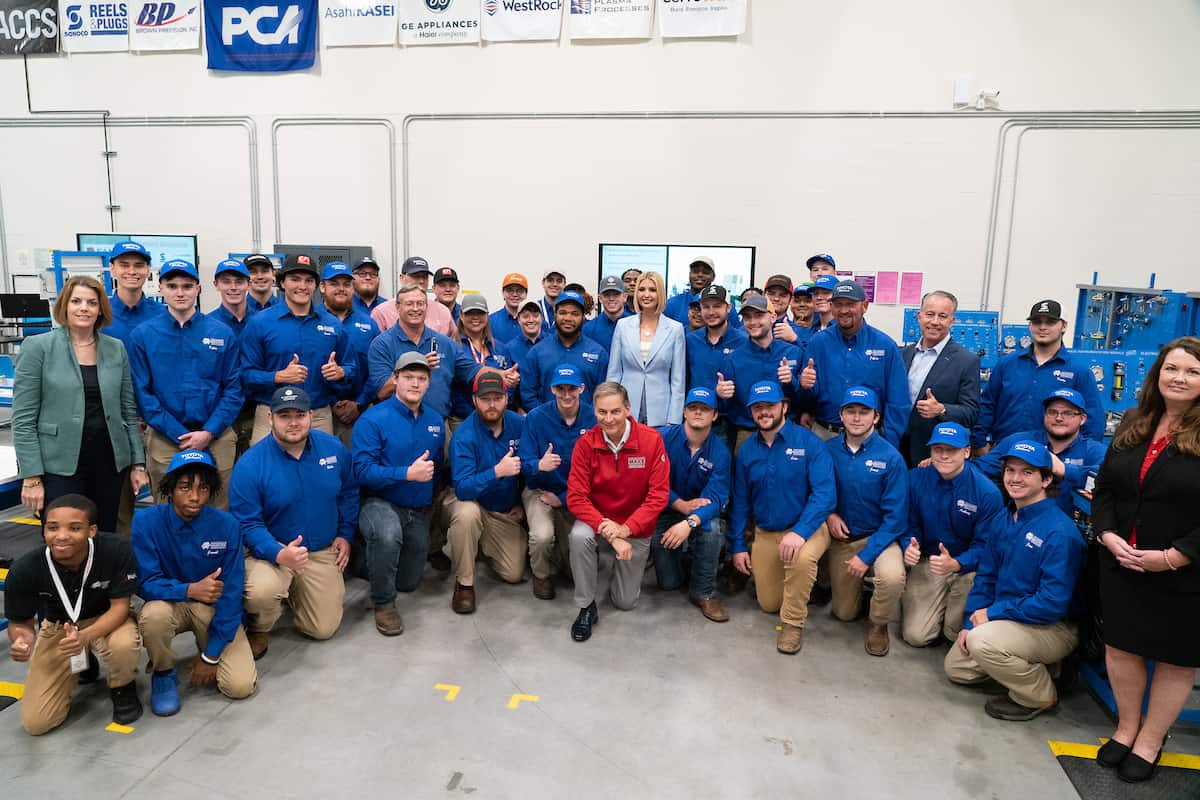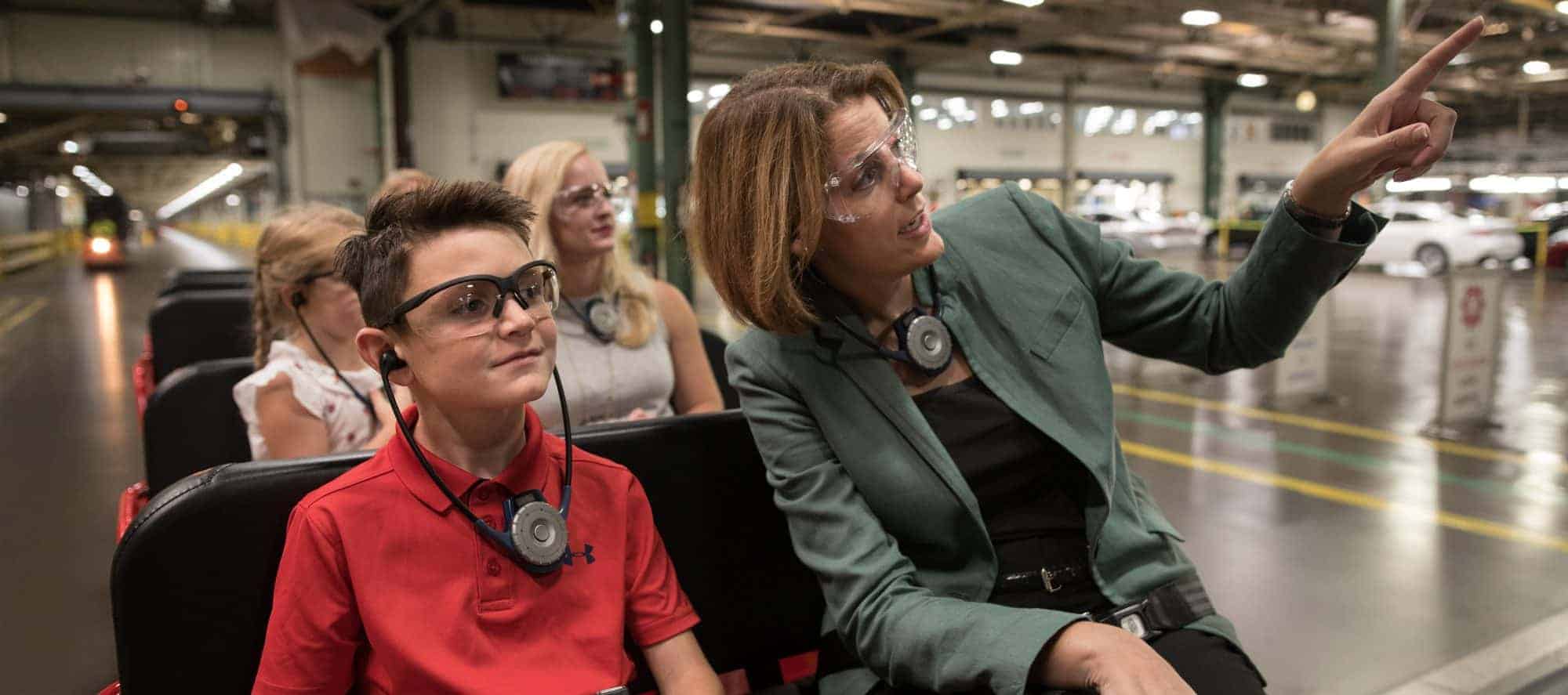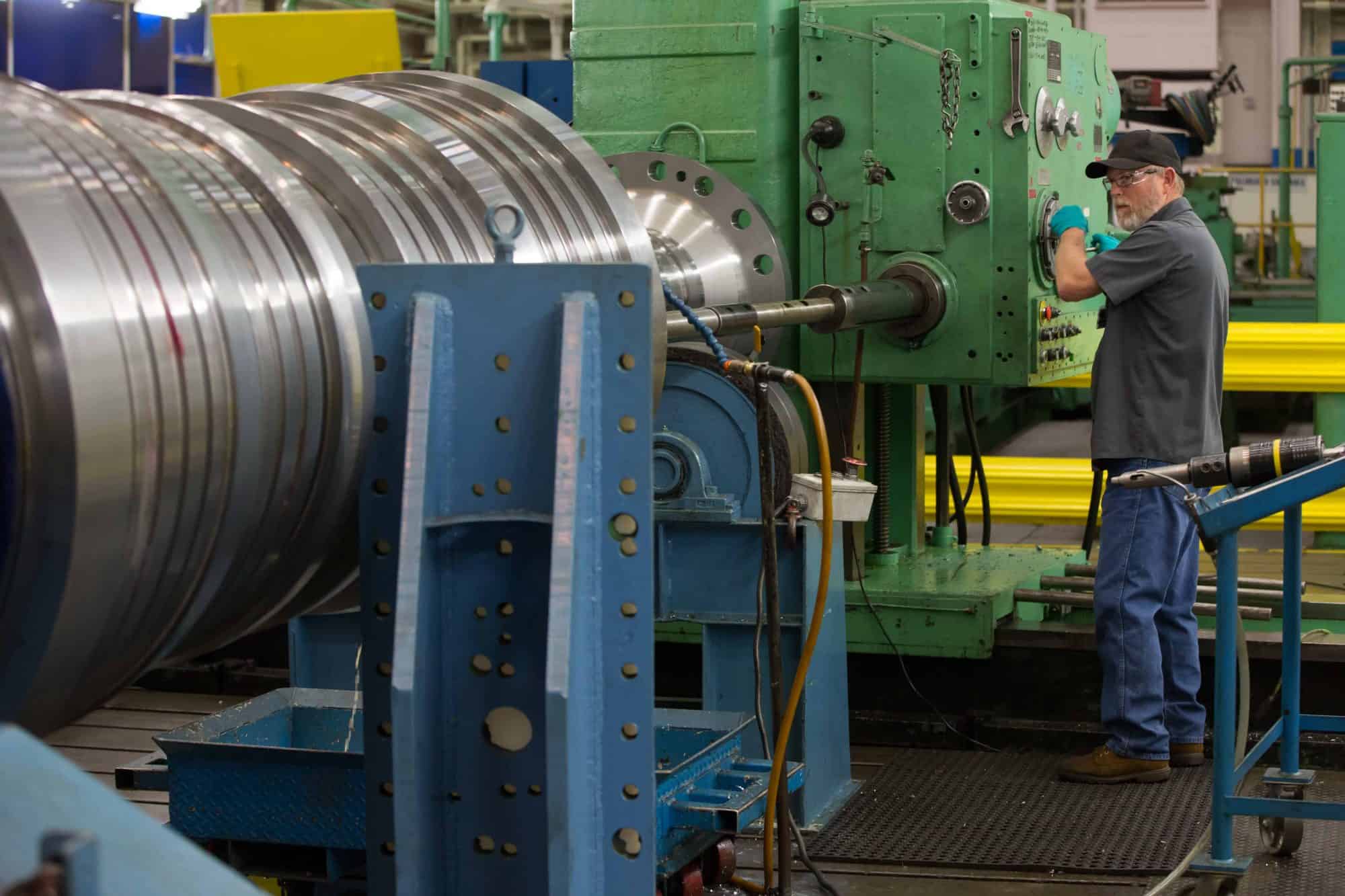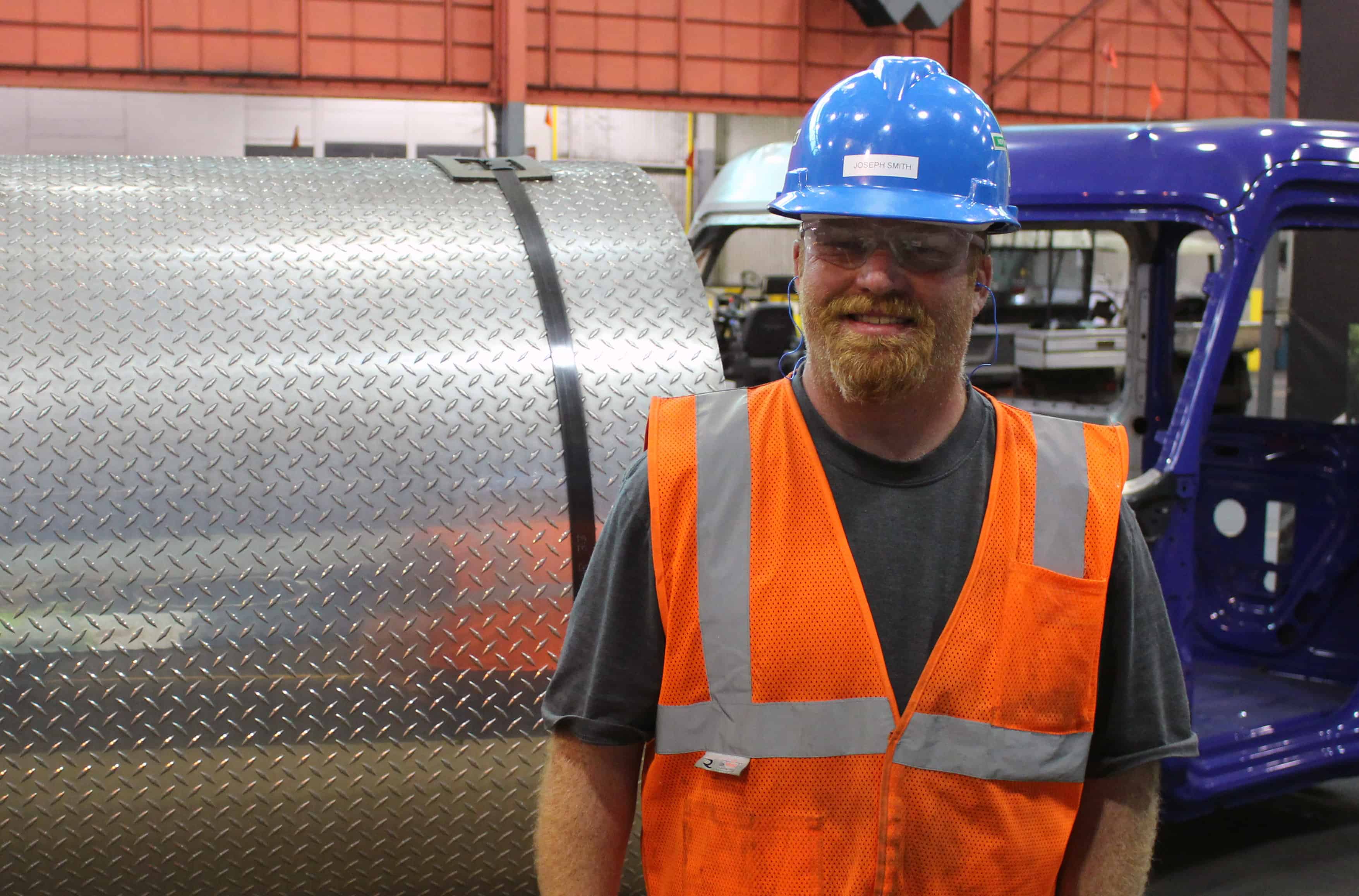NAM in 5 Photos: Week of Sept. 9

This week, the National Association of Manufacturers helped move the manufacturing industry forward on three major fronts.
- The NAM’s workforce and education partner, the Manufacturing Institute, announced it will expand Toyota North America’s successful FAME apprenticeship program nationwide. The MI’s Executive Director Carolyn Lee, the NAM’s CEO Jay Timmons, Special Advisor to the President Ivanka Trump, TMNA’s Executive Vice President Chris Nielsen and Ingersoll Rand CEO Michael Lamach shared this news during a roundtable with FAME apprentices.
- At the NAM’s headquarters, Export-Import Bank President and Chairwoman Kimberly Reed participated in a roundtable with manufacturers to discuss the critical bank reauthorization.
- Also at the NAM’s headquarters, Environmental Protection Agency Administrator Andrew Wheeler and Assistant Secretary of the Army for Civil Works R.D. James joined Timmons to announce the finalization of a rule to repeal the controversial 2015 Waters of the United States rule and clear the way for a new rule to protect America’s water resources without overstepping the bounds of the law.
Manufacturing Institute to Expand FAME Apprenticeship Program
The National Association of Manufacturers, the Manufacturing Institute and Toyota Motor North America on Tuesday announced the operational and stewardship transition of Toyota’s Federation for Advanced Manufacturing Education (FAME) program to the MI.
https://twitter.com/AlexGangitano/status/1171392933397966849
NAM CEO Jay Timmons and MI Executive Director Carolyn Lee were joined by Advisor to the President Ivanka Trump at Alabama Robotics Technology Park in Huntsville, AL, for the announcement.
Today, I am visiting the Alabama Robotics Technology Park to learn more about their FAME apprenticeship program and their partnership with @ShopFloorNAM (NAM signed our #PledgetoAmericasWorkers in July and committed to 1.2 Million NEW training opportunities!)
— Ivanka Trump (@IvankaTrump) September 10, 2019
FAME apprentices receive a two-year industrial degree, Advanced Manufacturing Technician, while working in their sponsor’s manufacturing facility. FAME trains students of all ages and backgrounds, from recent high school graduates to experienced manufacturing employees looking to advance their careers.
.@ToyotaPolicy has built an incredible apprenticeship program with FAME. I’m honored that the @TheMFGInstitute will continue and build on that success. https://t.co/66Vz5w8313 pic.twitter.com/qygxa3fHga
— Carolyn Lee (@cleeNAM) September 10, 2019
FAME chapters are currently operating in 13 states, and the MI will expand the program nationwide.
Toyota is proud to have started this workforce development program and see it grow so more American workers can benefit. https://t.co/bqzbgBbrxa
— Toyota Policy (@ToyotaPolicy) September 10, 2019
Education pathways to skilled careers and an expansion of apprenticeship programs are key goals of the NAM and MI’s Creators Wanted Fund, a campaign to inspire more Americans to pursue careers in modern manufacturing.
Thanks again to @IvankaTrump for coming to @TheMFGInstitute’s and @ToyotaPolicy’s FAME apprenticeship announcement! Our industry is stepping up to provide opportunities for Americans to find meaningful careers. https://t.co/qw9ljPPClU
— Jay Timmons (@JayTimmonsNAM) September 10, 2019
For more information, read the MI’s press release.
Attract the Next Generation by Getting Involved in Manufacturing Day

Manufacturing Day, led by the Manufacturing Institute and the National Association of Manufacturers, is kicking off on Oct. 4.
Carolyn Lee, the Manufacturing Institute’s executive director, explains what makes this event unique, why it’s personally important to her and how you can get involved.
What is Manufacturing Day?
Manufacturing Day shows off what modern manufacturing looks like. Kicking off on the first Friday in October—and continuing throughout the month—this annual event helps manufacturing companies and educational institutions open their doors to students, parents, teachers, community leaders and more. Manufacturing Day shows students why they should consider a career in manufacturing and what skills manufacturing companies are looking for in job candidates.
How does Manufacturing Day make a difference for students?
On Manufacturing Day last year, hard material manufacturer CERATIZIT hosted an event in Michigan. At the beginning of the day, they asked the group who was interested in a career in manufacturing. Only three or four students raised their hands. The students then spent the day taking the tour of the facility, trying out CERATIZIT’s products and using CAD software to make their own keychains. At the end of the day, they were asked the same question about who would be interested in a career in manufacturing. This time, there were only three or four students who didn’t raise their hands!
You might think you know what manufacturing looks like today, but seeing is believing — and seeing modern manufacturing firsthand can be life-changing for students. I hope that Manufacturing Day makes a difference in the lives of the students who attend, getting them to seriously consider a career in manufacturing.
Why is Manufacturing Day important to you?
I grew up in a manufacturing family. My dad, grandfather and even my grandmother for a short time worked in manufacturing. When I was a kid, manufacturing was a lot different than it is today — and I still thought it was cool! Now, it’s even more amazing. Manufacturing careers are increasingly high-tech, and technology is increasingly an integral part of the industry. Manufacturing employees are excited about technology, and they’re excited to learn and grow in their careers.
It’s always amazing to see what the manufacturing workforce makes and what goes into making the things that improve our lives every day and how they do it. Manufacturing Day is the way for everyone to see it for themselves.
How can I get involved in Manufacturing Day?
If you’re a manufacturer, plan an event for your community on Oct. 4 (or another day in October), and make sure to register it on Manufacturing Day’s website. If you’re a student, parent or teacher, find events being held in your area using the map on our website.
Heroes MAKE America Fuels Veteran’s Oil and Gas Career

As a child, Josh Matherne dreamed of joining the military. He realized that dream as a team supervisor in the U.S. Army infantry at Fort Hood, where he mentored younger soldiers and helped ensure that they were doing their jobs safely and successfully.
“My grandfather was in the Marines, and he really pointed me in the right direction,” said Matherne. “I always thought it was the right thing to do. As soon as I could serve, I wanted to serve.”
All the while, Matherne was interested in the oil and gas manufacturing industry. When he began to think about a civilian career, the Heroes MAKE America program was a natural fit. The program aims to build a mutually beneficial pipeline between the military and manufacturing, offering transitioning service members in-demand manufacturing skills and training, and educating manufacturers on how to recruit and retain members of the military and their families. As a student in the Heroes program, Matherne expanded his knowledge in manufacturing and tailored his resume to reflect his work ethic, determination and passion for the industry. Through the program’s regular networking opportunities, company tours and training support, the initiative helped him launch his new career.
“The Heroes program gave me an idea of what I was getting myself into,” said Matherne. “It eased my transition by getting me into the civilian mindset and taught me how to interact with civilian workers.”
Like many Heroes MAKE America participants, Matherne initially wondered if his skills would transfer into his field of interest. But shortly after he began his current role as a chemical operator at Occidental Chemical in La Porte, Texas, he found that his military training made him ideal for a position that required discipline and attention to detail. He has already been fast-tracked toward a promotion, and he has found a familiar rhythm that reminds him of his experience as an infantry team leader.
“It’s kind of like the military,” said Matherne. “The family-style team; being a part of something worth being a part of.”
Matherne continues to share open job opportunities within his company and other oil and gas companies in order to help other veterans like him find their next career in a well-paying, growing sector. He’s also mentoring new veteran hires, giving them a sense of what to expect during their transition and teaching them how they can use their past training to succeed in manufacturing.
“It’s a great atmosphere, has great people, and has a similar structure to the military,” said Matherne. “The manufacturing industry loves the drive we have and the discipline we have. They love seeing it, and they love hiring it.”
Learn more about the Manufacturing Institute’s Heroes MAKE America program.
New Report Dives Into Retaining The Aging Manufacturing Workforce

Right now, one-quarter of the manufacturing workforce is over 55 years old. Meanwhile, the manufacturing industry is struggling to attract enough younger workers with the right skills and qualifications. Facing a workforce crisis—with open jobs in manufacturing recently reaching an all-time high—manufacturers are finding that retaining older workers is not only a necessity but an asset.
The Manufacturing Institute’s Center for Manufacturing Research, in partnership with the Alfred P. Sloan Foundation, recently conducted a survey to discover how companies are addressing this shifting demographic challenges.
This workforce issue affects nearly all manufacturers, the study found. Ninety-seven percent of respondents reported that they fear losing institutional knowledge when these workers depart.
“Manufacturing is facing a demographic sea change—leaders in the industry know it, and many are proactively adapting to it,” said Chad Moutray, the Manufacturing Institute’s Center for Manufacturing Research director and the National Association of Manufacturers’ chief economist. “Given the current workforce crisis, other manufacturers should look to the successful initiatives being implemented in the industry and collectively expand on them to develop the workforce of tomorrow. The simple fact is that companies are very concerned about losing their top talent to retirement and are finding creative ways to keep them longer and to train younger workers.”
The study also examined the innovative approaches manufacturers can use to extend older workers’ productivity and help transfer institutional knowledge to the next generation. For example, manufacturers are implementing upskilling and training programs to address the challenges this demographic may experience. Sixty-nine percent of companies said they had on-the-job training programs, and 54 percent said they have internal technical training programs.
“Manufacturers are utilizing the expertise of their older workers, implementing policies and procedures to keep them longer and creating opportunities to pass on their knowledge and talents to the next generation,” said Carolyn Lee, the Manufacturing Institute’s executive director. “The reason for this is clear: unlocking the knowledge of today’s older manufacturing workers is critical to shaping tomorrow’s industry leaders.”
Manufacturing Output Hits All-Time High, Signaling Industry’s Strength
For the past two years, manufacturers have been setting new records when it comes to manufacturing output, and through the first quarter of 2019, the industry has continued to reach new heights.
Four out of five manufacturers remain positive about their company’s outlook, according the National Association of Manufacturers’ latest Outlook Survey, and new Bureau of Economic Analysis (BEA) data find that manufacturers’ level of output hit an all-time high once again. As noted in the recent BEA report, manufacturers produced a total of $2.3852 trillion worth of goods for the economy in the first quarter of 2019, up from $2.3845 trillion in the fourth quarter of 2018.
“Manufacturing output has consistently set new records since the beginning of 2017, and while we have seen softer data so far in 2019 than we might prefer, I would continue to expect the sector to hit new all-time highs throughout the rest of this year,” the NAM’s Chief Economist Chad Moutray said.
In fact, manufacturing accounted for 11.3 percent of real GDP in the first quarter of 2019—and the industry continues to have the largest economic multiplier of any major sector.
“At a time when conventional wisdom holds that the sector is less important than it once was, all of these data show manufacturing in the United States is alive and kicking, producing more goods than ever and continuing to be a bright spot in the economy,” Moutray said.
The industry’s continued success has created many new jobs as well. Manufacturing job openings were also at an all-time high in May with 509,000 open jobs, according to the Bureau of Labor Statistics’ Job Openings and Labor Turnover Survey. This solid job creation is actually exacerbating an existing challenge in the industry: a lack of enough skilled workers.
Manufacturers could have 2.4 million unfilled jobs by 2028 unless the right steps are taken today to build the workforce of tomorrow. The NAM and The Manufacturing Institute are leading the way toward solving this workforce crisis, and they have launched a $10 million Creators Wanted campaign, which plans to fill 600,000 manufacturing jobs by 2025.
Manufacturers Pledge Training Opportunities to 1.2 Million Workers
Timmons: “Manufacturers Proudly Make This Pledge to the American Worker”
Washington, D.C. – National Association of Manufacturers President and CEO Jay Timmons and Manufacturing Institute Executive Director Carolyn Lee will join President Donald Trump and Advisor to the President Ivanka Trump to sign the Pledge to America’s Workers, with manufacturers committing to provide training opportunities to 1,186,000 manufacturing workers over the next five years to address the industry’s skills gap crisis. Timmons, a member of the American Workforce Policy Advisory Board, will make the announcement official at a White House event marking the one-year anniversary of the initiative, which asks companies and trade groups nationwide to commit to expand programs that educate, train and reskill American workers from high school age to near retirement.
Manufacturers face a workforce crisis with more than half a million unfilled manufacturing jobs today and 2.4 million jobs that may go unfilled by 2028, said Timmons, who also serves as chairman of the board of The Institute. But manufacturers are also problem solvers and committed to being part of the solution. So today, manufacturers proudly make this pledge to the American worker: we will continue to invest in our workforce and provide 1,186,000 Americans with the opportunity to receive training and development that will enhance their skills and prepare them for the next step on their career journey. This is manufacturers demonstrating that we are keeping our promise to invest in our people. The men and women who make things in America are the backbone of this economy, and it is our commitment that America’s manufacturing workers will have the opportunity to learn, grow and take on new challenges.
We are thrilled to have NAM make this huge investment into our future and current manufacturers, said Ivanka Trump. By creating pathways for all Americans, regardless of age or background, to acquire the skills needed to secure and retain high-paying jobs, we can maintain our strong competitive edge and ensure inclusive growth and opportunity in our booming economy.
The 509,000 open manufacturing jobs reported in May marks an all-time high for the industry. According to a 2018 skills gap study by the Institute and Deloitte, as many as 2.4 million manufacturing jobs will go unfilled by 2028. The most recent Manufacturers’ Outlook Survey also found that the inability to find skilled workers remains the single greatest challenge facing manufacturers today and for the past six quarters.
With a record number of job openings right now—and many more expected over the next decade—the future of the manufacturing industry will be tied to the future of its workforce, said Lee. That’s why we are committed to supporting the manufacturing workforce of today and growing the manufacturing workforce of tomorrow. Our sector’s pledge over the next five years to provide training opportunities to more than a million men and women who make things in America will help keep manufacturing competitive and secure manufacturing’s mantle of leadership well into the future.
Ahead of its 125th anniversary and the 2020 elections, the NAM recently announced a member-driven campaign to raise at least $10 million for the newly established “Creators Wanted Fund” to inspire and drive more Americans to pursue careers in modern manufacturing. The NAM and The Institute will bring a “Creators Wanted” mobile tour of modern manufacturing to parents and students in 20 to 25 states over 18 weeks, unveil a year-long nationwide digital campaign to recruit new talent to the industry and host a culminating “Making America” Festival in Cincinnati, Ohio, in September 2020 featuring interactive exhibits, thought leadership forums and entertainment to showcase the future of modern manufacturing in America. The campaign will also fuel The Institute’s workforce programs and help build the next generation of solutions to grow the manufacturing workforce. Learn more about the campaign here.
-NAM-
The National Association of Manufacturers is the largest manufacturing association in the United States, representing small and large manufacturers in every industrial sector and in all 50 states. Manufacturing employs more than 12.8 million men and women, contributes $2.38 trillion to the U.S. economy annually, has the largest economic multiplier of any major sector and accounts for more than three-quarters of private-sector research and development. The NAM is the powerful voice of the manufacturing community and the leading advocate for a policy agenda that helps manufacturers compete in the global economy and create jobs across the United States. For more information about the Manufacturers or to follow us on Shopfloor, Twitter and Facebook, please visit www.nam.org.
-MI-
The Manufacturing Institute is the education and workforce partner of the National Association of Manufacturers. We drive programs and research to promote modern manufacturing and jumpstart new approaches to growing manufacturing talent. For more information, please visit www.themanufacturinginstitute.org.
NAM to Mark 125th Anniversary with $10 Million 2020 Campaign
Nationwide Initiative Seeks to Recruit 600,000 Americans into Manufacturing Careers
Washington, D.C. – Ahead of its 125th anniversary and the 2020 elections, the National Association of Manufacturers today announced a member-driven campaign to raise at least $10 million for the newly established “Creators Wanted Fund” to inspire and drive more Americans to pursue careers in modern manufacturing.
The NAM will bring a “Creators Wanted” mobile tour of modern manufacturing to parents and students in 20 to 25 states over 18 weeks, unveil a year-long nationwide digital campaign to recruit new talent to the industry and host a culminating “Making America” Festival in Cincinnati, Ohio in September featuring interactive exhibits, thought leadership forums and entertainment and to showcase the future of modern manufacturing in America.
The campaign aims to cut the skills gap by 600,000 workers by 2025; increase by 25 percent the number of students enrolling in technical and vocational schools; increase by 25 percent the number of students enrolling in apprenticeships and reskilling programs; and raise to 50 percent—from 27 percent—the number of parents who would encourage their children to pursue a career in modern manufacturing. Ingersoll Rand Chairman and CEO Michael Lamach, Emerson Chairman and CEO David Farr and former Fluor Corporation Chairman and CEO David Seaton will co-chair the campaign.
“We’re going to seize this moment—in a big way. This is a once-in-a-generation opportunity to leverage our organization’s unmatched strength to tackle the workforce crisis with immediate and long-term solutions,” said Lamach, the newly elected chair of the NAM Board of Directors. “We could have simply held traditional celebrations to mark the NAM’s milestone, but our mission is to look to the future and be the best stewards of our members’ investment. The Creators Wanted Fund and the campaign it will power are exactly what our industry and country need to build the talent pipeline and secure the future of manufacturing in the United States. I could not be more proud that the NAM is taking up this charge.”
According to a study by The Manufacturing Institute and Deloitte, the skills gap is expected to leave 2.4 million manufacturing jobs unfilled by 2028. According to the NAM’s First Quarter Manufacturers’ Outlook Survey, more than 70 percent of manufacturers cite the inability to attract skilled workers as their top challenge.
“The NAM is the only organization prepared to take on this challenge in a bold and creative way—and CEOs and executives recognize its potential. The NAM gets results, and this campaign will deliver results,” said Farr. “Manufacturers across the country are growing, investing and hiring. All this success comes with a responsibility to work together to change minds about modern manufacturing and give more people the chance to have a job that pays well and makes a difference in the world.”
“We have a recruiting mission. Parents, students, veterans—all communities—need to hear a consistent and clear message from manufacturers: ‘Creators Wanted,’” said Seaton. “The Manufacturing Institute is a powerful resource for our industry, and through the Creators Wanted Fund, we’ll ensure the long-term success of transformative programs like Heroes MAKE America and the STEP Women’s Initiative. No one is better equipped to lead this historic effort than the NAM, so I’m proud to be a part of it.”
“The NAM is fortunate to have these three world-class business leaders at the helm of this effort,” said Jay Timmons, president and CEO of the NAM and chairman of the board of The Manufacturing Institute. “Manufacturers are keeping our promise to make a difference for our communities and our country. We have set ambitious goals that we intend to exceed. We will keep manufacturing front and center in 2020 and deliver the results our members expect and deserve.”
-NAM-
The National Association of Manufacturers is the largest manufacturing association in the United States, representing small and large manufacturers in every industrial sector and in all 50 states. Manufacturing employs more than 12.8 million men and women, contributes $2.38 trillion to the U.S. economy annually, has the largest economic multiplier of any major sector and accounts for more than three-quarters of private-sector research and development. The NAM is the powerful voice of the manufacturing community and the leading advocate for a policy agenda that helps manufacturers compete in the global economy and create jobs across the United States. For more information about the Manufacturers or to follow us on Shopfloor, Twitter and Facebook, please visit www.nam.org.
Heroes MAKE America Graduate’s Manufacturing Career Takes Flight
"Once I got to the description of Heroes MAKE America, I knew that was what I wanted to do."

Joseph Smith spent 20 years in the military, beginning as a mechanic working on Apache helicopters and serving for most of his career as a maintenance supervisor in the U.S. Army. Today, he’s a maintenance unit supervisor based in Davenport, Iowa, at Arconic—a worldwide light metals manufacturer creating products for sectors from aerospace to consumer electronics.
Initially, Smith didn’t know how he’d adapt to civilian life after two decades in the military, but he was immediately impressed with The Manufacturing Institute’s Heroes MAKE America program, which aims to connect manufacturers with highly qualified candidates and offer transitioning service members manufacturing-related training and support, creating a pipeline between the military and manufacturing.
“I was trying to decide what I wanted to do after the military,” said Smith. “I was looking into the different programs and apprenticeships the army offered, and once I got to the description of Heroes MAKE America, I knew that was what I wanted to do.”
Smith grew up interested in how things are made. “I used to watch that How It’s Made series on TV,” he said. For him, his new job makes sense. He still enjoys watching how aluminum is made from raw material and seeing it become a finished product like the wing of an airplane.
“There’s so much that goes into the products that we use and the things we see on a daily basis,” he said.
Smith has been impressed by the similarities between his role in the military and his current position. While the transition to civilian life could have been challenging after two decades in the military, he immediately found manufacturing was uniquely suited to his skills.
“I could almost instantly tell,” Smith said. “The way that the maintenance portion of Arconic runs was very similar to, day-to-day, how working in the military was.”
Smith encourages other veterans to consider making the same move he did and emphasizes the number of jobs available to skilled workers.
“There are a lot of people who don’t realize how valuable a career in manufacturing can be,” says Smith. “Especially for a veteran coming out of the military, they don’t realize how in-demand their skills can be. Everything you do can be translated into a manufacturing career. And manufacturing employers are hiring like crazy.”
Learn more about the Manufacturing Institute’s Heroes MAKE America program.
NAM Survey: Manufacturing Optimism Dips in Q2 Amid Trade Uncertainties, Workforce Shortage
Urgent Action Needed on USMCA, Other Priorities to Boost Manufacturing Growth
Washington, D.C. – The National Association of Manufacturers today released the results of the Manufacturers’ Outlook Survey for the second quarter of 2019. In the field during the prospects of tariffs on Mexican goods and still unresolved threat of 232 auto tariffs, the survey shows a dip in manufacturers’ optimism amid trade uncertainties. A positive outlook for their business was registered by 79.8 percent of manufacturers in the second quarter, down from 89.5 percent in the first quarter.
“Clearly, optimism is still strong among manufacturers, but you can’t overlook the fact that trade uncertainties are causing concern for manufacturers,” said NAM Chief Economist Chad Moutray, who conducted the survey. “All things equal, I would expect these numbers to improve if we get the U.S.–Mexico–Canada Agreement across the finish line, strengthen our trading relationships by removing the threat of 232 auto tariffs and get a trade deal with China done.”
The inability to attract and retain a quality workforce remained manufacturers’ top business concern (68.8 percent) in the second quarter. The survey also found that a majority of manufacturers (56 percent) are concerned about trade uncertainties with regards to the USMCA, a U.S.-China trade agreement, looming 232 auto tariffs and the now-resolved threat of U.S. tariffs on Mexico. In addition, nearly half of manufacturers are concerned about increased raw material prices.
The Manufacturers’ Outlook Survey has surveyed the association’s membership of 14,000 large and small manufacturers on a quarterly basis since 1997 to gain insight into their economic outlook, hiring and investment decisions and business concerns. The NAM releases the results to the public each quarter. Further information on the survey is available here.
-NAM-
The National Association of Manufacturers is the largest manufacturing association in the United States, representing small and large manufacturers in every industrial sector and in all 50 states. Manufacturing employs more than 12.8 million men and women, contributes $2.38 trillion to the U.S. economy annually, has the largest economic multiplier of any major sector and accounts for more than three-quarters of private-sector research and development. The NAM is the powerful voice of the manufacturing community and the leading advocate for a policy agenda that helps manufacturers compete in the global economy and create jobs across the United States. For more information about the Manufacturers or to follow us on Shopfloor, Twitter and Facebook, please visit www.nam.org.
